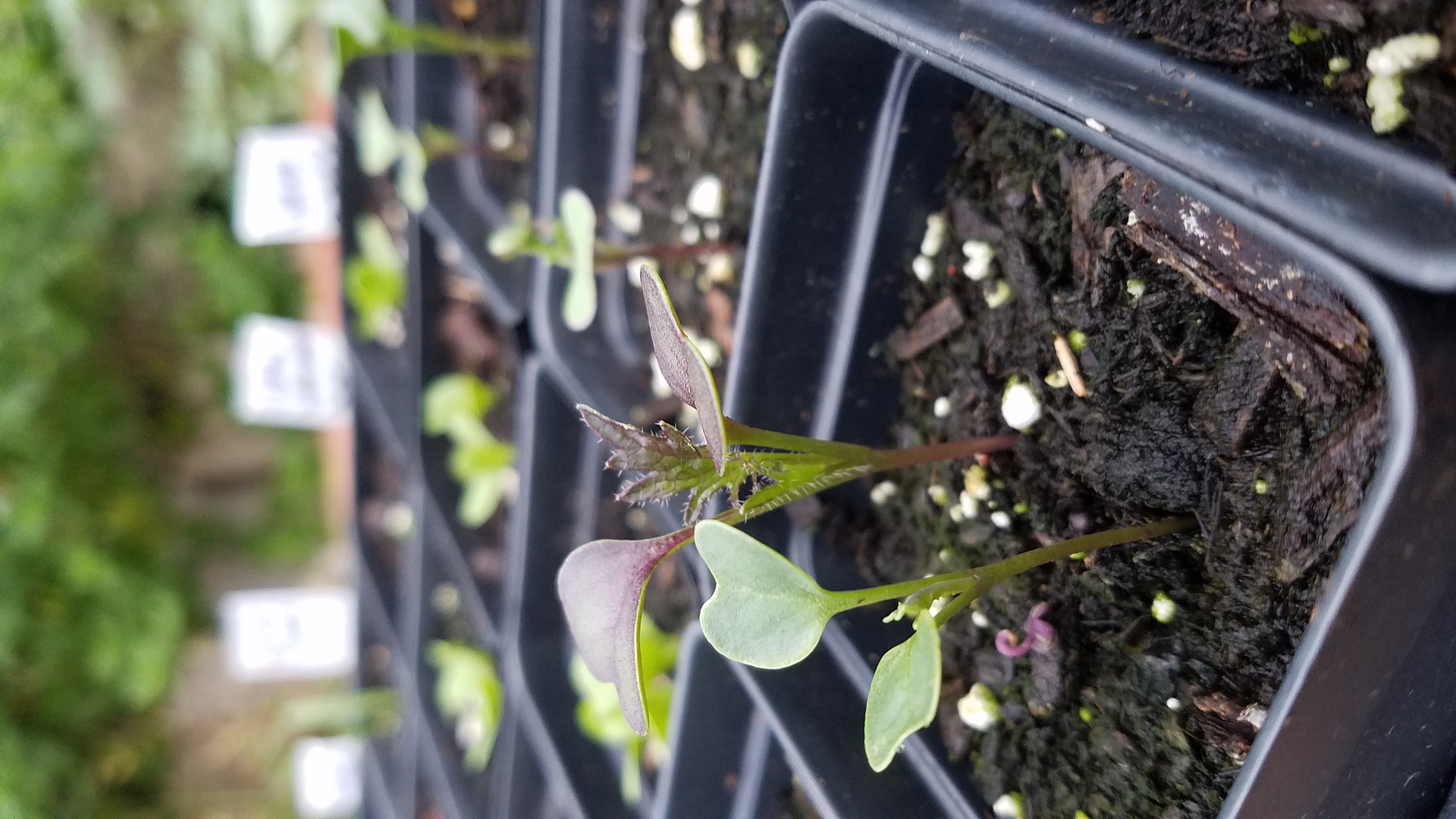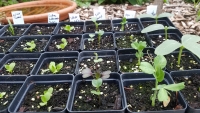
First, identify a spot in your garden or pots where you can remove plants that are done producing. Remove those, add an inch of compost, and select your seeds. After planting remember to water regularly, enough to keep the soil moist until the seedlings germinate. The warm temperatures this time of year means quick germination times for seeds. Get ready to see some new baby plants!
Stumped on what to grow so late in the season? Many vegetables and herbs can still provide a harvest before our first frost in mid-October. This includes plants such as arugula, lettuce, parsley, spinach, basil, and kale. Looking for plants that can tolerate the quick frosts of October and November? Carrot, cabbage, kohlrabi, mache, parsley, scallions, spinach and kale are cold hardy and will likely survive short cold periods.
Once your late season veggies begin producing you may decide to protect them from frost. Protecting your veggies will prolong the harvest time. This can be done with simple plastic coverings or milk jugs. A more committed gardener might construct a cold frame, a sort of miniature greenhouse. This can be constructed with an old window for the top and wood or straw for the sides.

A cold frame is simply built with a window and a few pieces of lumber for the box sides. The cold frame will protect my veggies from long frosts in the fall.
Feeling experimental? Throw a handful of seeds into a bare spot in your garden and see what grows. You may be surprised at how late in the season you can harvest.





